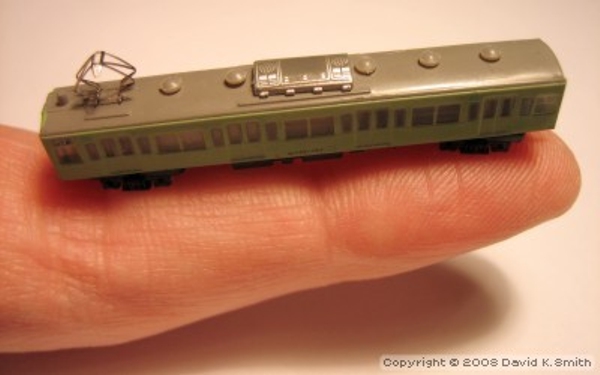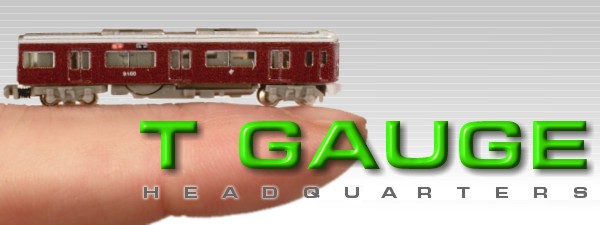Adventures in T: The Lost World

You may choose to believe the following, or not, although there are people who will corroborate my story.
T Gauge (1:450) got a rocky start. Its inventor envisioned a model train scale small enough that he could fit a layout in the space of his laptop. Some years later, he got his wish—although his dream would be deferred.
It turns out the first fruits of his labor, as manufactured by the Chinese, had too much lead in the paint. Consequently all of the first train sets had to be returned and replaced by new ones—but not before a few of the very first sets had already been sold at a couple of shops in Tokyo. As it happened, an American serviceman stationed in Japan at the time offered to purchase one of the first T Gauge train sets on my behalf, and ship it to me straight away. He did as promised, just before the lead paint recall.
Which means I'm very likely the the first person in North America to have owned a T Gauge train set, and indeed, one of the very few people in the world to own a T Gauge set at that time. And it remained that way for over a year, until the sets were finally re-released. In the meantime, I posted many images and reviews of models that no one had access to until more than a year later (which drove some modelers nuts).
I was a pioneer in the scale, and for two reasons: one, I've always had an intense interest in small scales for as long as I've been a modeler; and two, I had a one-year-plus head start over everyone else. Among other things, I created a decent facsimile of a CNJ F7, built two layouts, handlaid 3mm track (including turnouts), developed several laser-cut building kits, and scratchbuilt many detail items such as working grade crossing flashers—all to scale. I documented my work in a blog and later a website that also featured a database of every known T Gauge product.
I'd also founded Talking T Gauge, which I hosted myself until a member in the UK became totally unhinged because I wouldn't ban a somewhat annoying teenager from the message board. He left the board in a huff, but because I wouldn't remove his posts, this utter lunatic began harassing me relentlessly, accusing me of being a Nazi among other vile, evil things, and even threatened to pay to have my website hacked!
Ultimately I did delete his posts, but the process of doing so caused the database to crash, and because the web host was unable to retrieve their backup, I was forced to close the message board. With my health already giving me grief, the experience unnerved me to the point that I abandoned T Gauge altogether.
Compounding the mystery of my adventures in T Gauge, several years later I suffered a catastrophic computer failure, which destroyed many files (and my backup drive was lost in a move to a new home). Karma, I guess.
Incidentally, the image above became the icon of the Wikipedia page on T Gauge. It's been recycled countless times all over the internet, although someone saw fit to remove the watermark because Wikipedia frowns on them.

An anonymous modeler had archived my entire T Gauge website back in 2014, after I'd mothballed the site. It doesn't include everything I did (my modeling work was published in a blog), but it does offer insight into what was going on in the scale way back when. So please enjoy a trip to T Gauge Headquarters. Recovery of this website offered a tiny glimpse of some of my modeling.

Recently I discovered that the Wayback Machine had crawled Blogger, and captured random bits of my old modeling blogs. Although all of the photos are gone—which is most regrettable—you can get a good sense of what was going on by the text alone, particularly ones detailing my departure from T. So please enjoy a tiny blast from the past with 1:450, Fragments of a Lost Blog.
